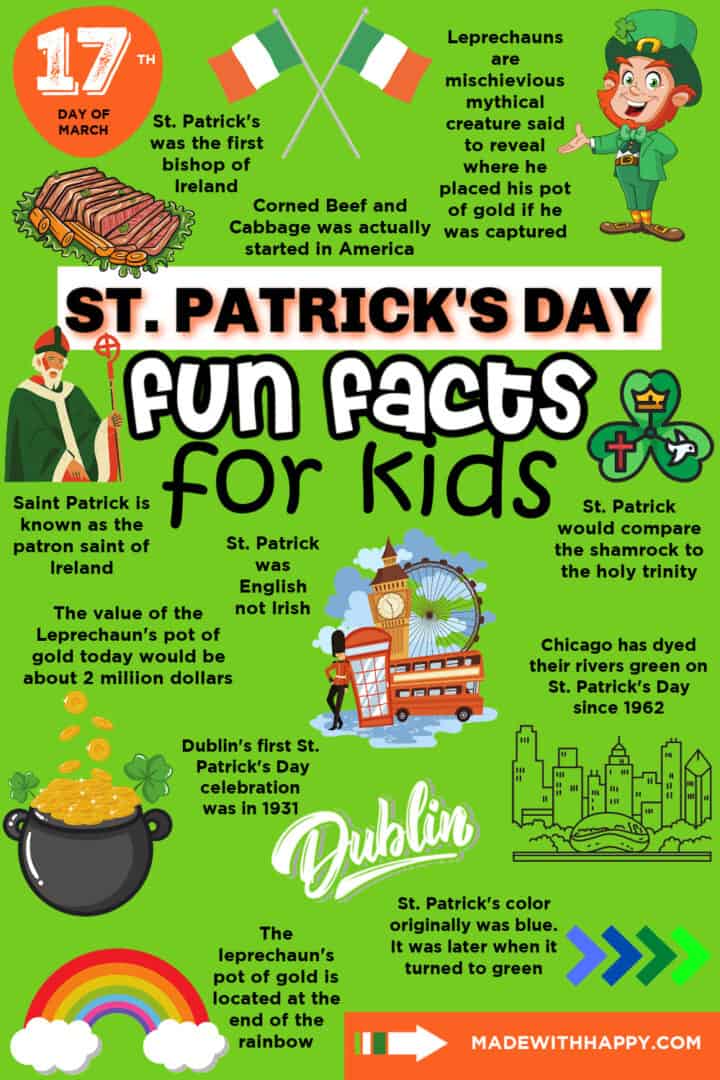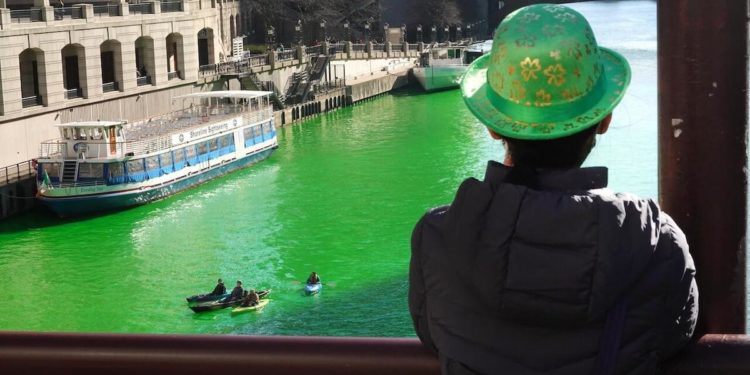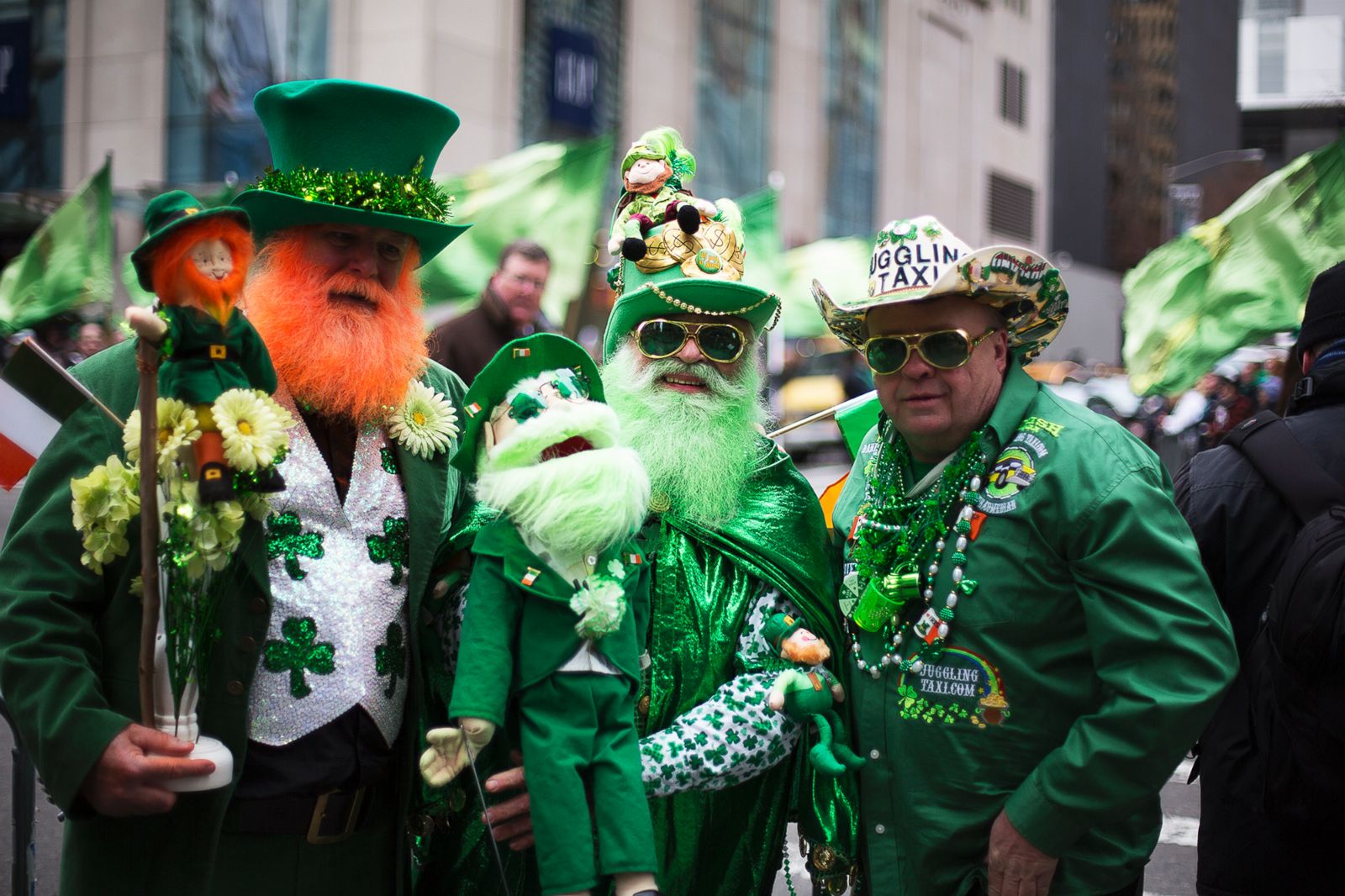Gallery
Photos from events, contest for the best costume, videos from master classes.
 |  |
 |  |
 |  |
 |  |
 |  |
 |
The first St. Patrick's Day parade, however, is believed to have been held in the United States in 1601. Over a century later, in 1762, homesick Irish soldiers serving in the British military Monday, March 17 is St. Patrick's Day, celebrating all things Irish in the U.S. and around the world. Cities celebrate with parades, bar crawls and more. St. Patrick's Day, observed on March 17, has transitioned from a feast day in Ireland to a widely celebrated holiday in the United States. The holiday commemorates St. Patrick, the patron saint of Although we typically celebrate St. Patrick's Day with a focus on Irish culture and heritage rather than its religious significance in America, the holiday has Catholic roots. So yes, St. Patrick's Day is a religious public holiday in Ireland and has been for over 1,000 years. Discover the spiritual significance of St. Patrick's Day as we delve into its Christian roots and the legacy of St. Patrick, the patron saint of Ireland. Celebrate March 17 with themes of hope and resilience, reflecting on personal faith journeys while honoring St. Patrick’s teachings and the symbolism of the shamrock. Join the blend of The Shamrock and St. Patrick’s Day Traditions. On St. Patrick’s Day, people worldwide wear shamrocks, decorate with the green clover, and partake in Irish celebrations. The shamrock is worn on lapels, embroidered onto clothing, and even painted on faces as a tribute to Ireland’s patron saint. St Patrick’s Day around the world. St Patrick’s Day is widely recognised throughout the United States as a celebration of Irish and Irish-American culture. The biggest St Patrick’s Day parade in the world is in New York City. Elsewhere in the States, the Chicago River is dyed green with an eco-friendly powder, an event that dates back to Why Do People Love St. Patrick’s Day? So, why do we love this day so much? It’s simple: St. Patrick’s Day brings people together! Whether you’re Irish or just love the fun, it’s a chance to wear green, eat good food, and laugh with friends. It’s about remembering St. Patrick’s big heart and celebrating a culture that’s full of life. St. Patrick's Day is a cultural and religious holiday celebrated annually on March 17. It honors St. Patrick, the patron saint of Ireland, and has become a commemoration of Irish culture and heritage worldwide. The short answer: Irish people came to America and brought their culture with them. St. Patrick's Day observances date back to before the founding of the U.S., in places like Boston and New York City. Saint Patrick's Day, or the Feast of Saint Patrick (Irish: Lá Fhéile Pádraig, lit. 'the Day of the Festival of Patrick'), is a religious and cultural holiday held on 17 March, the traditional death date of Saint Patrick (c. 385 – c. 461), the foremost patron saint of Ireland. Discover the true essence of St. Patrick's Day in our insightful article, which dives deep into its historical, cultural, and religious significance. Explore the rich symbolism behind the shamrock, the color green, and the whimsical leprechaun, revealing how this holiday transcends mere festivities. Uncover the evolving celebration that connects people globally, fostering pride in Irish How did an Irish saint’s day become an American thing? The short answer: Irish people came to America and brought their culture with them. St. Patrick’s Day observances date back to before the founding of the U.S., in places like Boston and New York City. The first parade was held in Manhattan in 1762. St. Patrick and the Shamrock. The association of green with St. Patrick’s Day is deeply rooted in the legend of St. Patrick himself. According to tradition, St. Patrick, the patron saint of Ireland, used the three-leaf clover, or shamrock, to explain the Holy Trinity to the pagan Irish. March 17 marks the fifth-century death of our beloved patron saint, Saint Patrick, and for over a thousand years, has been celebrated as a religious feast day. According to history, St. Patrick St. Patrick’s Day is the feast day of St. Patrick, a patron saint of Ireland. Originally celebrated with religious feasts and services, St. Patrick’s Day became a secular celebration of Irish culture when it reached the United States alongside Irish immigrants. This makes St. Patrick’s Day special for many people who believe in God. Honoring Irish Christian Heritage. St. Patrick’s Day celebrates the rich Christian heritage of Ireland. The holiday recognizes the enduring impact of Saint Patrick’s mission and the deep roots of Christianity in Irish culture. Ireland has a long history with Key Facts about St Patrick's Day. Spiritual Significance: St. Patrick's Day honors the arrival of Christianity in Ireland and Saint Patrick’s missionary work. Symbols: The shamrock represents the Holy Trinity, and a legend claims St. Patrick banished snakes from Ireland. St. Patrick's Day's spiritual meaning is rooted in Christianity. At its core, St. Patrick's Day is a religious holiday celebrated by Catholic, Lutheran, Anglican, and Eastern Orthodox Christians.. The man who inspired the holiday, Saint Patrick, is best known for bringing Christianity to Ireland in the 5th century. St. Patrick’s Day is a global celebration of Irish culture that takes place annually on March 17, the anniversary of the patron saint of Ireland's death in the fifth century.
Articles and news, personal stories, interviews with experts.
Photos from events, contest for the best costume, videos from master classes.
 |  |
 |  |
 |  |
 |  |
 |  |
 |